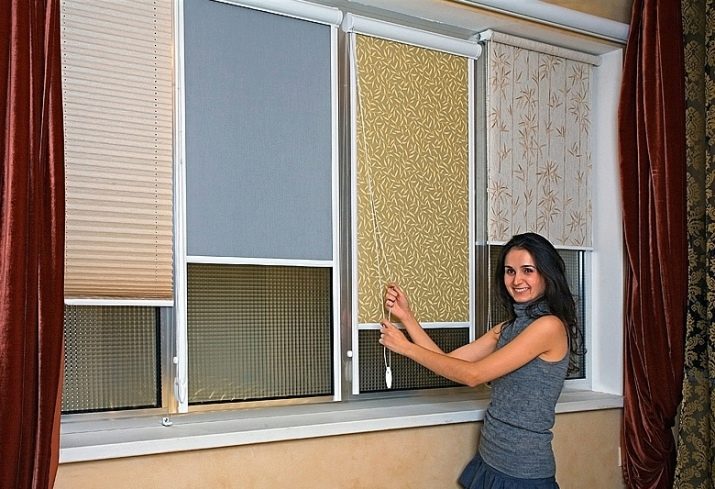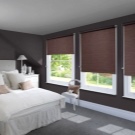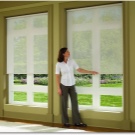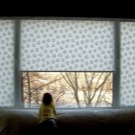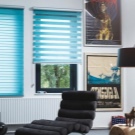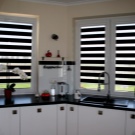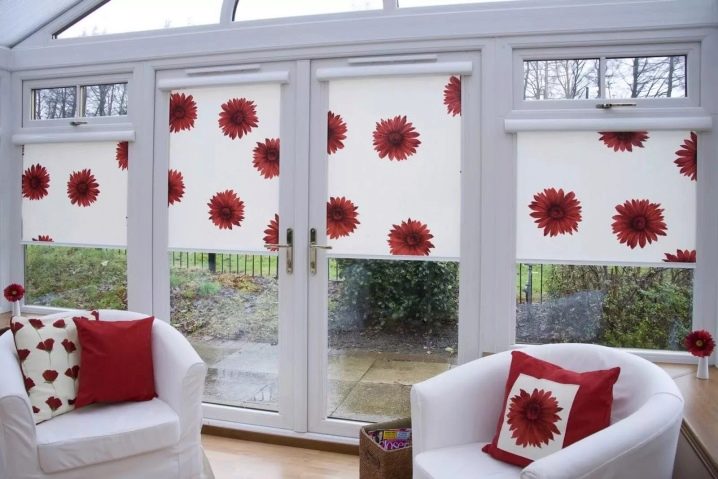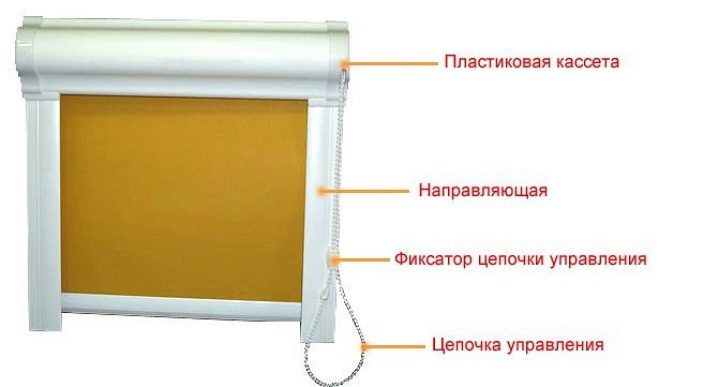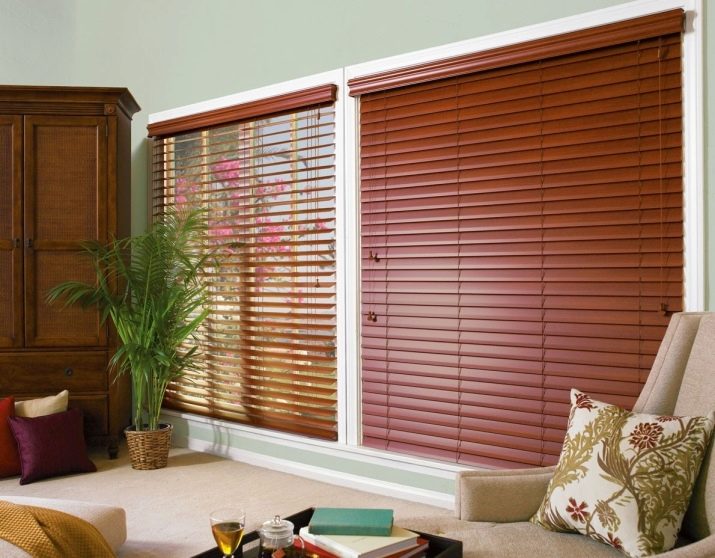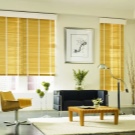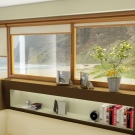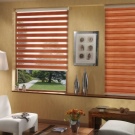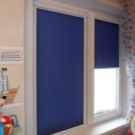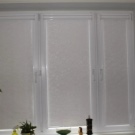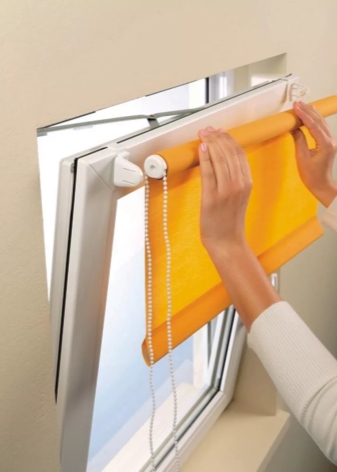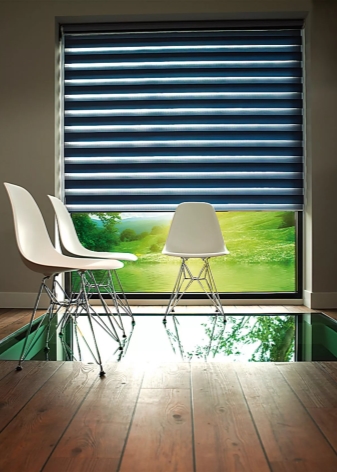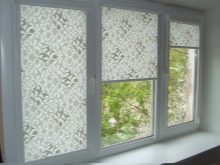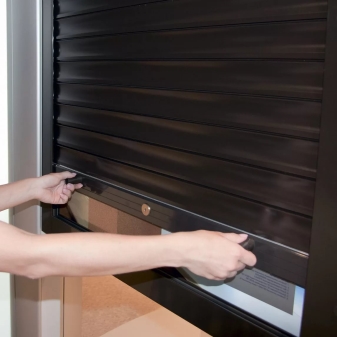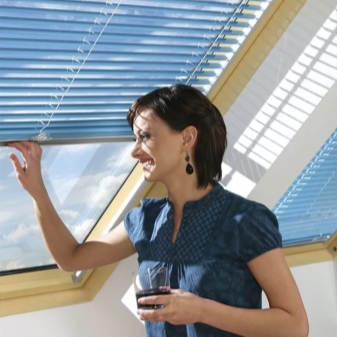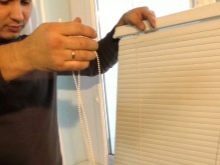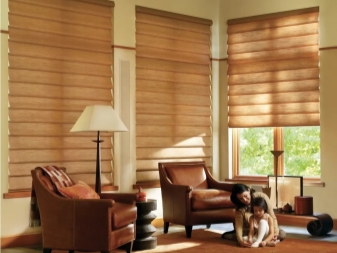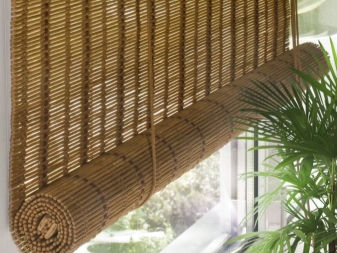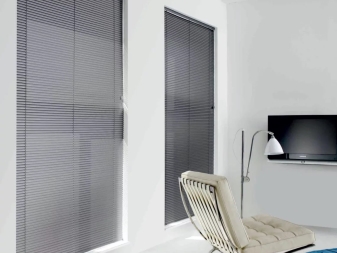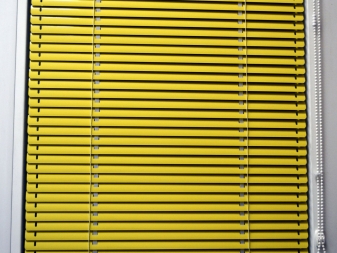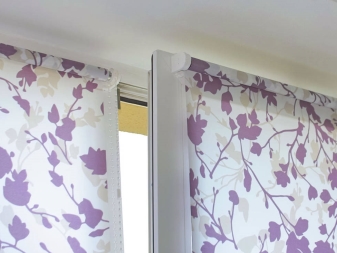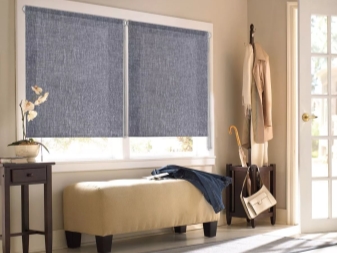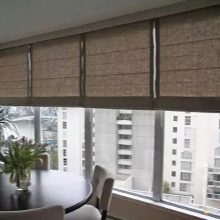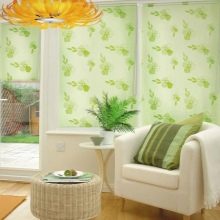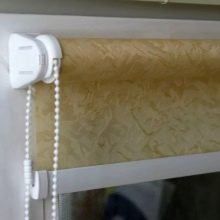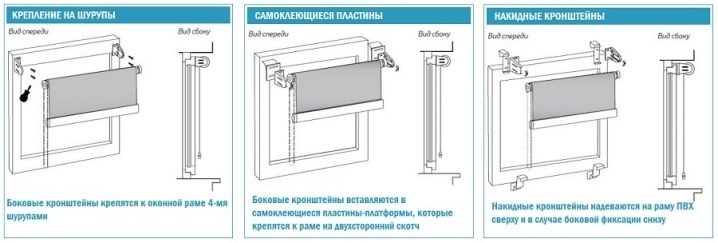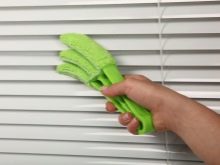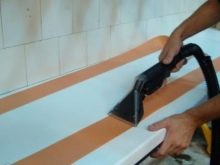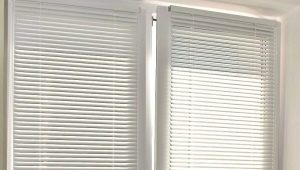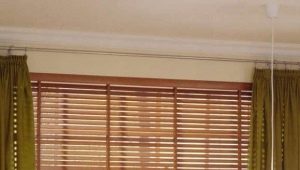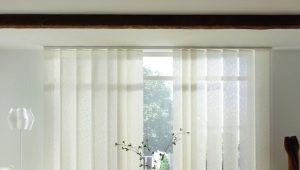Cassette blinds
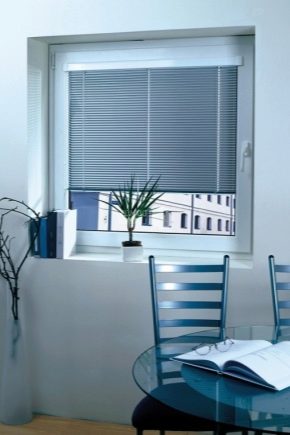
Curtains are an essential attribute of almost every apartment building. But today, these elements have been replaced by blinds, which allow you to adjust the luminous flux much better. There are several types of similar products that differ in design and technical characteristics. A special place among them is occupied by cassette blinds.
Design feature
Cassette blinds are a canvas that can roll up into a roll. This allows high-quality adjustment of the luminous flux, if necessary, changing the position of the protective surface. Initially, this type of blinds was intended only for plastic windows.
A feature of such models is that their installation does not require drilling a window frame.You can install cassette blinds today on almost any type of window casement.
The design consists of several basic elements:
- Canvases. The form and design can be integral or consist of several mobile elements that are interconnected.
- Cassette. This concept is often understood as a special shaft on which the web is wound. In this case, the design is equipped with a control mechanism. Many shafts are hidden in metal boxes, which allows you to give them the best design.
Many models have a small width, which often equals the size of a single window sash.
Advantages and disadvantages
When developing cassette blinds, many customer requests were taken into account. This allowed us to make a design that will solve almost all the tasks in this area. There are several positive aspects of cassette blinds:
- Practicality. System management is quite simple, and the design can adapt to almost any type of window.
- Aesthetics. Manufacturers in the manufacture of blinds use a variety of materials that allows you to choose a product design for any style of interior.Some modifications can be made to order.
- Durability. The service life of both the material and the mechanism itself is practically unlimited. If, however, a breakdown has occurred, then all these elements can be replaced with new ones quite easily. To extend the period of operation, experts recommend properly care for blinds.
- High-quality light protection. This figure is achieved through the use of special materials and impregnations. Some of them can repel dust or have a bactericidal effect.
- Ease of care. Cloth blinds should be periodically wiped with a dry or slightly damp cloth. For metal models, additional soap solutions are used.
- Convenience of operation. Cassette blinds fit snugly to the glass, without changing their position even with a slight slope. At the same time between these surfaces forms a kind of air gap, which acts as a heat-insulating layer.
- Easy installation. Even an unprepared person can install the blinds. The main thing with this - follow the recommendations of the manufacturer.
- Low weight. The canvas does not create large loads on the frame, which allows to increase its size. Therefore, such blinds can technically be made for any type of windows.
It should be noted that these products are not universal and have several drawbacks:
- Some types of fabric can absorb odors remove which later will not be possible (rolls are not erased).
- Fragile lifting mechanism. This applies only to elements that are made of plastic.
- Thin slats are easily damaged. You can even do this by wiping them with a rag. To eliminate this feature, it is necessary to operate very carefully.
- Relatively complex design in comparison with other models of blinds. This is especially noticeable when dismantling the canvas.
Species
Cassette blinds are a fairly popular type of curtain, which can vary in many ways. This allows you to select among them many models and modifications.
Roll cassette
A feature of this design is the use of a continuous fabric cloth as a protective layer. This allows you to quickly and accurately wind the layer into a roll,which is inside the cassette. These models have unique properties. Conventionally, they can be divided into several subspecies:
- Cassette. Standard modifications that are installed on all types of plastic windows. The width of the canvas can reach 3 m, which allows you to completely close the entire sash. All these structures are complemented by special plumbs that regulate the lifting of the canvas.
- Mini-cassette. This species is small in size. Initially mini-cassettes were invented for installation on non-standard windows made of wood or euroconstruction. Today they are found in various sizes and styles.
- Uni. This type of curtains is characterized by the presence of side rails that allow you to better control the movement of the canvas. Depending on the type of these elements, several subspecies of such structures are distinguished. Often, this type of blinds are installed in offices, where they adapt well to the style of the room.
Today there are blinds consisting of several layers of fabrics. In addition, each of them is independent and has a different degree of transparency.This allows you to lift a certain layer, thus regulating the flow of light.
Horizontal
Horizontal blinds represent the cloth consisting of a set of thin plates (lamels). All these elements are connected by a thin thread that connects them into a single structure. It should be noted that the slats can rotate around its axis, which allows you to adjust the lighting more qualitatively. When raised, the horizontal web does not curl into a roll, but shrinks. All lamellae fit snugly together and then hide in a decorative box (cassette). The width of the plates can vary in the range from 16 to 50 mm depending on the material from which they are made.
A bright representative of this type are aluminum blinds, which are installed outside on the doors or windows. They not only protect the room from light, but also provide security.
Control method
Depending on the mechanism that drives the elements of the canvas, such types of blinds:
- Spring. The blade is controlled by a special spring. They are very rare today,since such a construction does not allow to obtain a reliable fixation.
- Blinds with chain. Adjustment of the slats is made by the movement of a specially removed thread. This option is used very often, as it is the easiest and most reliable.
- Automatic systems. The most modern type of management. It is carried out with the help of a special electric motor, which drives the shaft or the lifting thread. The control can be carried out both with the help of a stationary button and with a remote control. Many systems can be equipped with light sensors that cause the mechanism to rise or fall automatically.
Materials
A distinctive feature of blinds is the type of material from which the canvas is made. For the manufacture of horizontal structures using several substances:
- Tree. Lamels are distinguished by a unique structure, and also perfectly tolerate heat. But they are undesirable to use in a humid environment (in the kitchen or in the bathroom), as they may lose their unique design.
- Bamboo. One of the most popular materials. Today on the market there are both bamboo lamellas and original canvases from this material,which can be twisted into a roll.
- Aluminum. Metal perfectly tolerates external influences. Blinds can be installed both inside and outside buildings. Lamels are durable and practical.
- Plastic. Substance is durable and well resists aggressive substances. Blinds from it cost much less, but they are not inferior in quality to other models.
As for roller blinds, they are made from a variety of fabrics, among which there are several main ones:
- Acrylic. Cloths from it are becoming less common, since the material is very bad breathable. The service life of acrylic products is relatively small, but they practically do not crumple.
- Viscose. The basis of this fabric is cellulose. These cloths differ in ease and are well erased. But the material quickly burns out and loses its external characteristics.
- Linen. Linen fabrics have high strength and can also be used in various temperature conditions. The substance is completely natural and does not pose any danger to human health.
- Cotton. Natural fabric that is very easy to wash.But with constant exposure to the sun, the material gradually loses its strength.
- Silk. Cloths from it are the most beautiful and expensive. At the same time the material is very quickly crumpled and burned. Therefore, these elements often have to be replaced with new products.
Mounting methods
Installation of cassette blinds can be done in several ways:
- Glue. To do this, use double-sided tape, which fix the product to the surface of the window. Please note that this method is possible only for plastic windows, as the system is attached to its frame.
- On fasteners. A similar option involves the use of screws or dowels. To fix the structure, the box is leveled in a horizontal plane and then screwed to the frame or wall with fasteners. Some modifications can be equipped with special brackets that facilitate this procedure. Roller blinds are fixed directly to the cassette frame, where several technical holes are made.
To install blinds of this type can be directly on the sash (the best way), and on the wall above the opening or inside it.
How to install the blinds, see the next video.
Product care
Cassette blinds can serve quite a lot. To prolong their life, you should periodically clean them from dust. For this, experts recommend a wet cleaning. At the same time aluminum structures can be washed in a soap solution. Bamboo and wood are not recommended for watering. It is better to wipe them with a dry or slightly damp cloth.
The most difficult in care are rolled materials. They should be cleaned only with a vacuum cleaner. Experts do not recommend washing the fabric, it is better to carry it in dry cleaning. This should be done twice a year. As for the lifting mechanism, care is not required. If, however, a breakdown has occurred, it can be repaired at service centers.
